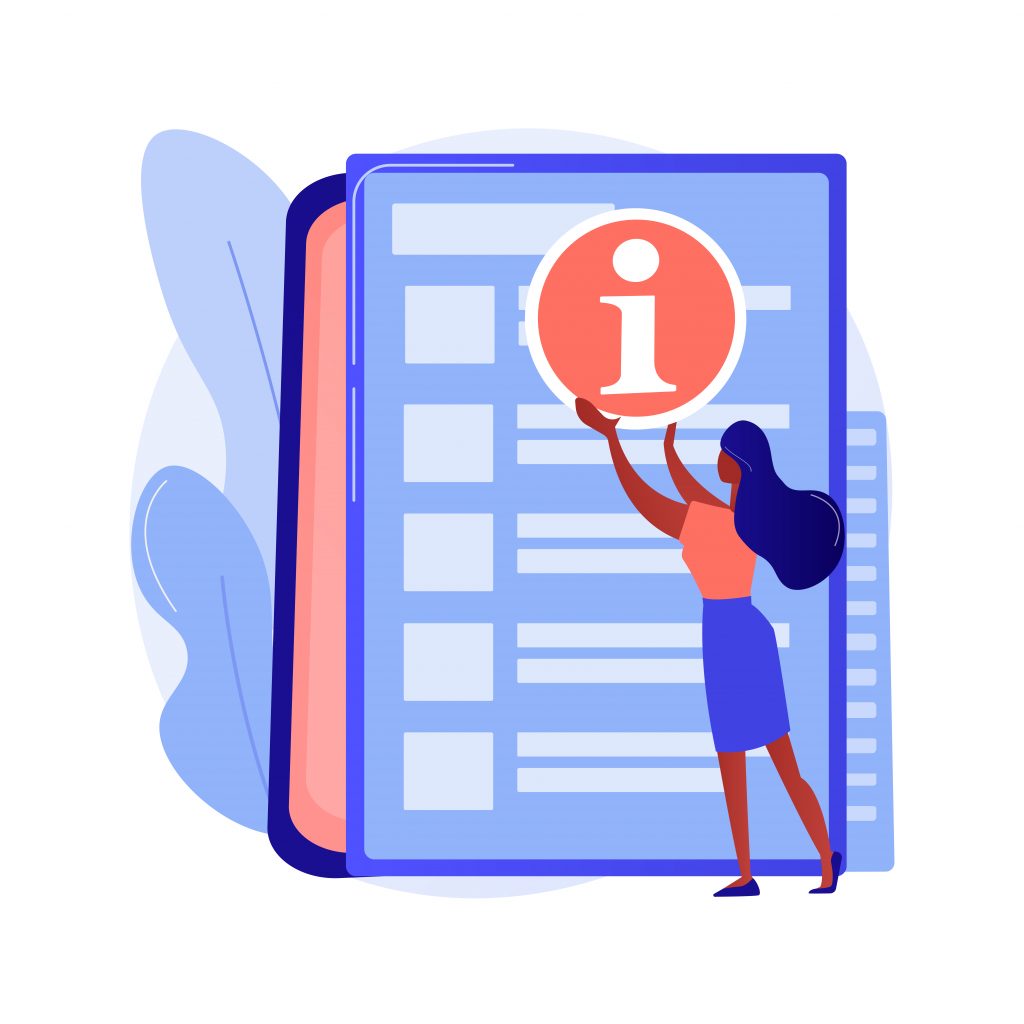
Customer Education Through Social Media
Customers need to read up on several things, such as sales contracts. Or product manuals. Or even just warranties. You have to know how far your rights go. You should also be aware of the product’s information and the limitations of the seller. Reading a (potentially tiny) line of text is better than making a big fuss with complaints or issues. When it comes to business, educating customers about products or services can go a long way. Yet nobody wants to sit at a table and learn about heavy concepts! Not a lot of people have the patience to read from a thick book with no pictures. Sure, there are ways to entice people to read your content, but you have to subtly employ customer education using social media.
So don’t subject your customer to that—be fun first and foremost! Teach them without being overt about it. The truth is that people have less patience for things that aren’t attractive to engage with. Sure, we all want to learn, but we don’t always have the time or attention span for it. Speaking of which, Microsoft Canada conducted a study to find the average attention span and found that it’s a startling 8 seconds. Due to our digitized lifestyle, we now have a shorter attention span than a goldfish, which clocks in at 9 seconds! It gets worse when you realize that in 2000, the average person’s attention span was 12 seconds.
What Does It Mean to Educate Customers?
Customer education, also called customer training, means to teach clients or customers about products and how to use them! Talent LMS thinks of customer education or training as “customer empowerment.” Why? “The simple fact is that new and exciting products require new knowledge and skills from customers. And if customers aren’t educated in the uses and benefits of a product or service, they won’t be able to recognize its full value.”
Even if you pull out all the stops to make your product the most widely-known item on the market, will your customer know how to get the most bang for their buck? Does your new product have any life hacks? Does the manual say anything about the little tricks the product can perform? What about troubleshooting tutorials when your customer gets into a bit of a pickle?
Benefits of Customer Education
Skilljar says customer education content is “designed to onboard, engage, and retain your new and existing customers that’s delivered in a programmatic fashion via in-person and on-demand channels.”
- Spreading the good word about your product or service.
- Teaching customers how to get the most out of the product or service.
- Helping them acclimate to the idea of using the product frequently.
- Sparing customers wasted time (and resources) from having to search for information that isn’t centralized.
- Leaving your customers with guides that don’t require the physical presence of an expert.
- Ensuring that their education can still occur through multiple means or channels.
- Raising overall interest levels.
- Raising the number of new customers.
- Increasing customer loyalty and retention.
- Improving customer satisfaction and engagement.
- Reducing interactions with customer support staff and lessening their workload of FAQs and complaints.
- Giving your business the reputation of a trustworthy brand.
How Can Social Media Educate Customers?
Social media entertains, connects, and educates. Social media can do much more than just be a place to share pictures of food and outfits. It is capable of being a channel your business can use to educate customers. Of course, a company has to have the social media channels appropriate to their business, but here are several tips that work for most, if not all, platforms. To educate customers, teach your consumers about products or services that remedy problems they’re facing. So, here’s how you educate customers on what your products or services are for:
Don’t just stay in the box.
There’s a world of rivals in the marketing world trying to achieve the same goals as you. They also want to get the most number of customers. Break out of the confines of what’s safe and conventional! Nobody wants a square. Have fun with your concepts! It’s also great to find what trends are going around and base your ideas on that, but your business has to distinguish itself. Why not find a concept that’s unique to the company? Get fresh new ideas, and maybe you might find that one jewel in the rough that’ll shine through the crowd.
Make yourselves appealing.
Don’t forget to add little incentives to make yourselves appealing to consumers. Think sneak peeks for new products! Invitations to test a new service! Or even prizes for a raffle draw! Anything you can think of that’ll bring all those customers into your (metaphorical) yards. Give a good enough reward. Those who participated and those who missed out alike will watch out for more goodies.
Be on (posting) schedule.
Avoid missing a day of scheduled posting! You have to always be present in the moment. This means the timeline, dashboard—what have you. Talk about announcements, have a Q&A, anything you want! You can even post about things not even related to products, such as company events! Oh, but do avoid posting too much in a single day. Limit and spread your posts equally throughout the week if you can! Don’t overload your customers—that’s only going to set your customer training process back.
Share news and relevant info.
Provide information regarding your business and its industry. Give your customers an inside look into what it is and what it’s about. Explain what makes your company so unique. But avoid spilling patented secrets! Instead of getting more, use your preexisting channels to share the knowledge. Another tip: try experimenting with fast facts, as not many people have the time to read a whole article! You can share facts about your company, trivia about the industry, and even stories of excellent brand experiences from customers!
Collaborate with celebrities and influencers.
Any celebrity with a following will jump at the chance to support their fave. With such buying power on their side, the partnership between the company and the star is the perfect time to educate newcomers! Depending on that VIP’s expertise and the sort of fans they attract, you may well have a new crop of loyal customers on your hands!. The celeb may be knowledgeable enough on their own, but your business provides a script. In return, your collaborator will provide an in with their fandom.
Communicate with your customers.
The best thing about social media is that they provide a channel for immediate responses, both ways. However, this also means that you’re at risk of losing their favor by neglecting those selfsame customers. Figure out your customers’ tastes, and you can cater to them effortlessly. Consumers don’t always have the time to see your posts, but they do appreciate the updates. With this, you do customer training while creating bonds with them!
Best Types of Media for Customer Education
You don’t have to be a rocket scientist to handle customer education social media posts. You’ll want to teach your market—that is, your audience—everything your product or service has to offer. Social media has its pros and cons, but you should know the best types of media you can use to educate your customers:
- Webinars. They’re perfect for explaining the ins and outs of a product or a service. It’s also great as it’s pretty much a workshop, but you don’t have to be physically present—just digitally!
- Graphics. One can craft a single illustration to give quick instructions concerning little [details], or you could have something that can handle more complex instructions such as:
- Slideshows or PowerPoint presentations. These can pull knowledge from training modules within the company.
- Trivia questions and quizzes. These are pretty good for students especially. Regardless of who’s reading, anyone can engage with it and possibly even form some healthy competition.
- Articles or blog posts. Though these might take a while to read, they are still informative. You can educate your audience on a wide variety of subjects.
- Podcasts. They’re sort of like articles or blog posts, but instead of reading them, you hear them. It’s also a great way to give your eyes a break from staring at screens or pages all day while allowing you to continue absorbing information. A great thing about podcasts is that they leave notes and related links for further study.
- Live or prerecorded videos. You can also educate customers through social media by producing videos about tutorials, seminars, and even events related to your business or industry!
You can pick as many as you find helpful for your social media customer education. Just don’t forget to post about your media on your business’ most popular channels, such as your company site!
Employ Customer Education Through Social Media
Companies should make sure they have ample informational material anytime they release a new product. Educating customers means teaching people about your product or service about what it offers and how they can best use them. By doing this, you impart knowledge to customers. Yet, it also has several benefits that include heightened customer loyalty and less chance of confusion and complaints among the customer base.
Educating customers with social media is an excellent strategy nowadays. Since few people have the patience to read an entire article nowadays, breaking down instruction and information into bite-size pieces for customer training. Thus, you have ample content that meshes well with social media’s required consistent posting.
So, regardless of whether you’re in the business of selling dish soap, smartphones, or stocks, you should have an informative digital guide at the ready. Yet, customer training or education through social media may still be confusing. Social media marketing services in the Philippines can help!















Comment 0